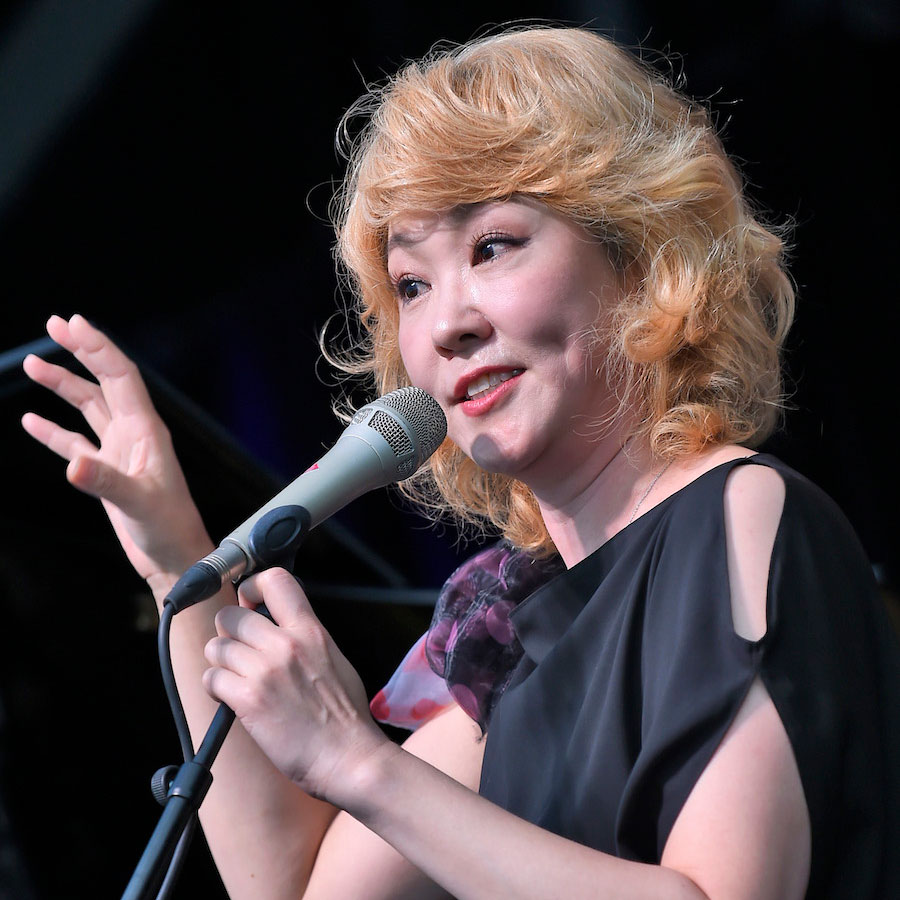
The Gaume Jazz Festival, which celebrates its 40th summer this year, is first and foremost a rural setting, in a village with an eminently musical name: Rossignol (Nightingale in English), in the south of Belgium, which has nothing of a flat country about it, as the landscapes are so beautifully undulating.
Then there’s the warm, friendly atmosphere – as our Belgian neighbors so good at – under the benevolent, competent leadership of Jean-Pierre Bissot, the festival’s creator. Last but not least, the varied and inventive program features Belgian and foreign musicians – but this year there are no Americans, which is rare for a European summer festival – including several Greek, Turkish and Tunisian musicians…
It all starts classically enough on Friday afternoon with the high-flying post-hard bop quintet of trumpet and flugelhorn player Rémy Labbé, featuring the trombone of veteran Phil Abraham, one of the Belgian instrumentalists who has acquired international renown over the decades.
Next up is one of the stars of the festival, appearing for the third time: Youn Sun Nah, who in recent months has toured throughout France and Germany with the program from her latest album, “Elles“, in duet with various pianists. It’s an unprecedented configuration for the singer, whose voice, in this intimate setting, reveals the full extent of her immense talent. And this time it’s Benjamin Moussay who accompanies her. She begins her concert a capella, accompanied by a discreet kalimba, before Moussay‘s Fender Rhodes joins in.
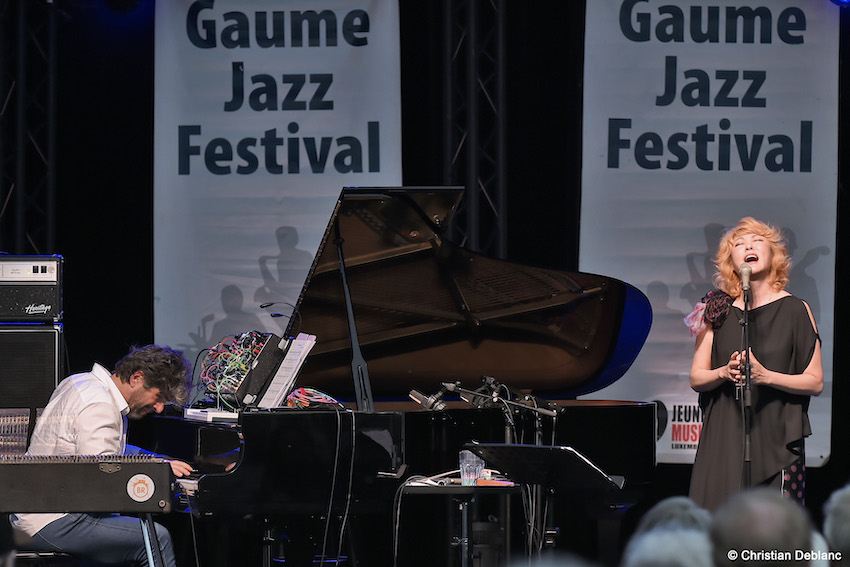 And immediately the magic happens. For this unique voice, which can range from a whisper to the bangs of a scream, is truly supernatural.
And immediately the magic happens. For this unique voice, which can range from a whisper to the bangs of a scream, is truly supernatural.
Vocal jazz is clearly the most popular genre of this music which, in its predominantly instrumental version, has often struggled to reach a wide audience since it is no longer dance music.
But Youn is not the type to seek to seduce an audience charmed by standards, like so many of her American and European colleagues. It’s through the singularity of her voice and an often original and atypical repertoire – which here ranges from Björk to Maria Joao via Nina Simone or Grace Slick – that she conquers an ever-widening audience, as do the instrumentalists who accompany her.
She is a unique artist who transforms all the songs she sings – like the majestically slow “My Funny Valentine“, where her art of nuance is a marvel – and who also occasionally offers her own compositions. Leaving plenty of room for her partner – who alternates or mingles acoustic and electric pianos with remarkable sensitivity and art of accompaniment – the Korean vocalist gave one of her finest concerts at Rossignol, before a stunned and delighted audience who gave her a standing ovation under the big tent of Gaume Jazz.
A little later, Aleph Quintet, a Belgian-Tunisian band played. Unfortunately, I was only able to hear two pieces, as the hall was full and latecomers like myself were barred from entering. However, I was able to appreciate their mixed music, which blended jazz with oriental sounds and melodies, and to discover Akram Ben Romdhane, an oud player of particular interest for his ability to alternate between single notes and sumptuous chords, demonstrating a remarkable harmonic science. Another of the group’s discoveries is its excellent pianist, Wajdi Riahi: a name to remember.
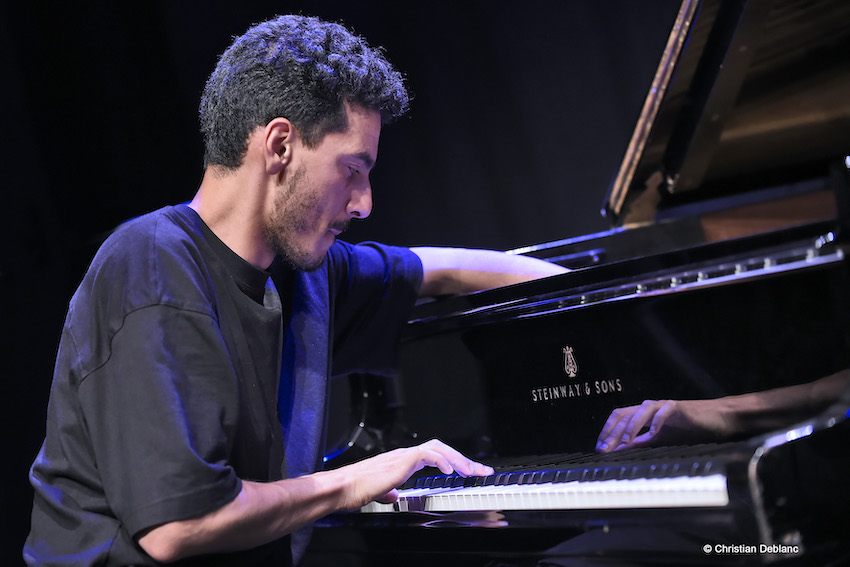 Next up was an atypical Franco-German sextet, if only for its name: Thérapie de Couple! A band with no real leader, where the interweaving or succession of timbres is highly original: violin, cello and double bass for the strings, tenor sax and clarinets for the winds, and drums as tonic as they are colorful.
Next up was an atypical Franco-German sextet, if only for its name: Thérapie de Couple! A band with no real leader, where the interweaving or succession of timbres is highly original: violin, cello and double bass for the strings, tenor sax and clarinets for the winds, and drums as tonic as they are colorful.
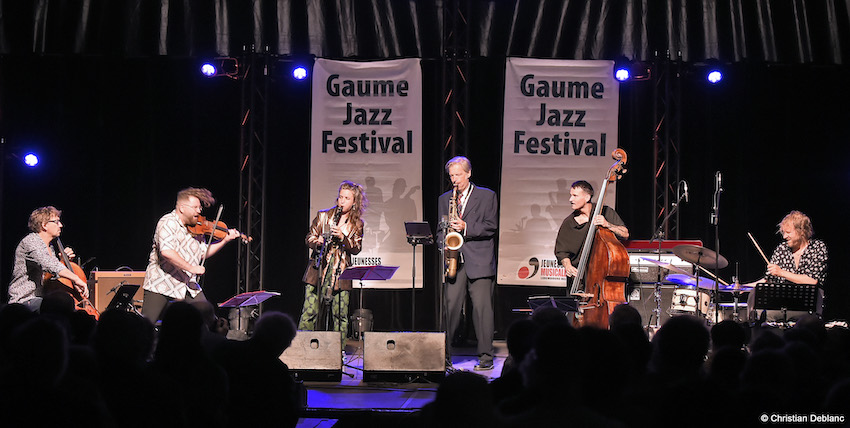 It’s a delight to follow their collective or solo explorations, as these six superb instrumentalists have the art of telling a story without either one of them ever pulling the wool over the other’s eyes. Some of them know each other well, since Daniel Erdmann plays in a trio with either Vincent Courtois or Théo Ceccaldi. As for Hélène Duret, the clarinetist, whom I didn’t know, nor the Robert Lucaciu/Moritz Baumgärtner rhythm section, they are first-rate improvisers. This is a group we’d like to see more often on French stages, and the fact that Gaume Jazz invited them shows the openness and curiosity of the Belgian festival.
It’s a delight to follow their collective or solo explorations, as these six superb instrumentalists have the art of telling a story without either one of them ever pulling the wool over the other’s eyes. Some of them know each other well, since Daniel Erdmann plays in a trio with either Vincent Courtois or Théo Ceccaldi. As for Hélène Duret, the clarinetist, whom I didn’t know, nor the Robert Lucaciu/Moritz Baumgärtner rhythm section, they are first-rate improvisers. This is a group we’d like to see more often on French stages, and the fact that Gaume Jazz invited them shows the openness and curiosity of the Belgian festival.
The second day began with a juvenile concert: the little Gaumais of jazz, accompanied by the Belgian-Brazilian trio Munsch (accordion, trombone and percussion), who were also due to play later in the afternoon.
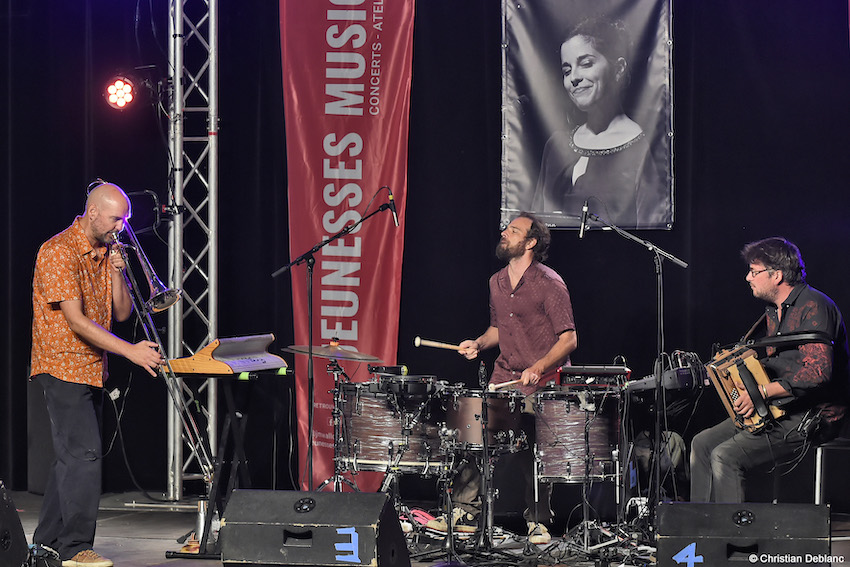 The hundred or so children formed a cohesive choir, performing a festive, invigorating repertoire, partly of Balkan music, and the three adult instrumentalists joined in with obvious enthusiasm.
The hundred or so children formed a cohesive choir, performing a festive, invigorating repertoire, partly of Balkan music, and the three adult instrumentalists joined in with obvious enthusiasm.
We have no doubt that these young singers will be part of the audience at future editions of Gaume Jazz, and some of them will even appear on the festival stages.
Martin Salemi‘s quintet, which followed, combines a sensitive, sophisticated harmonic base that is neither abstruse nor demonstrative, with a taste for melody that reveals a poetic, even lyrical vision of music.
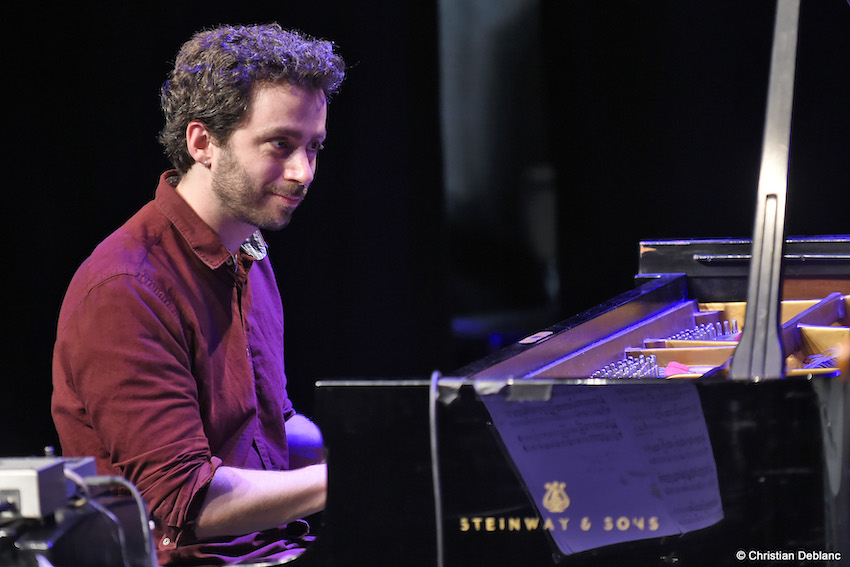 The leader – who sometimes plays acoustic piano, sometimes electric keyboards – is aided by four like-minded sidemen, each with their own sound and remarkable inventiveness.
The leader – who sometimes plays acoustic piano, sometimes electric keyboards – is aided by four like-minded sidemen, each with their own sound and remarkable inventiveness.
From Sylvain Debaisieux‘s silky or rough tenor to Guillaume Vierset‘s fluid or flamboyant guitar, we can’t help but praise them.
As for the rhythmic pair, they are totally attuned to each other, distilling a supple pulse that is both colorful and dynamic.
The result is a highly personal band sound that can’t be traced back to any particular school. It’s a delight to follow the paths they take us down, telling us the most beautiful stories.
Johan Dupont‘s harmonic sophistication continues, but with a more percussive approach to the piano, served by a phrasing that is often authoritative, yet with a remarkable finesse of touch.
The trio’s configuration is original, with Bo Waterschoot‘s virtuoso electric bass providing generous solos and the impeccable rhythmic support of the excellent Stephan Pougin on drums and colorful percussion.
Dupont is a musician of impressive power, and his classical background is evident in an approach to the piano that seems to come from the Russian school of a classical pianist such as Sviatoslav Richter. It’s hard not to be swept away by the impetuous musical flow produced by this power trio.
In stark contrast, during this largely piano-dominated day, was the trio of Fabian Fiorini and his two internationally renowned compatriots, bassist Nic Thys and drummer Dré Pallemaerts, a familiar face on the French scene.
The leader has a fairly economical language whose guidelines are constantly relevant. There’s no showboating here, just a skilfully articulated discourse that gives pride of place to the blues. Supported by two familiar partners who are among the most eminent musicians on the Belgian scene, Fiorini distilled a voluble, fresh and lilting music that perfectly matched the country atmosphere of the Gaume Jazz Festival.
They were followed by Tania Giannouli‘s trio under the big tent. An unusual trio in that, apart from the leader’s piano, it consists of an oud and a trumpet.
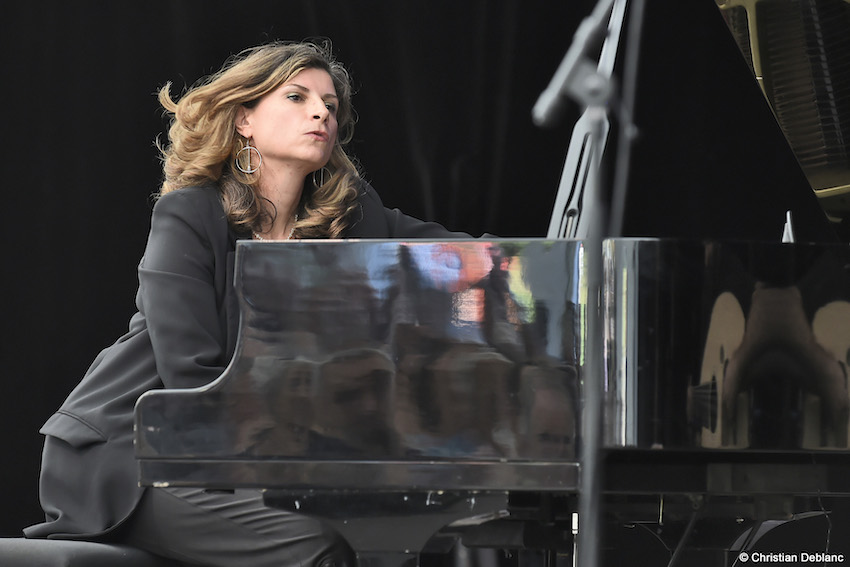 They begin gently with a nine-note ostinato that the piano chimes out before the trumpet and oud join in. An eminently poetic atmosphere is created from the outset, and these few notes resonate for a long time before the rhythm accelerates and the sonority amplifies.
They begin gently with a nine-note ostinato that the piano chimes out before the trumpet and oud join in. An eminently poetic atmosphere is created from the outset, and these few notes resonate for a long time before the rhythm accelerates and the sonority amplifies.
Piano, oud and trumpet: this unusual configuration quickly becomes obvious, and the charm of this combination of sounds soon wins over the audience.
 So much so, in fact, that one wonders why this trio, which plays all over Europe, never performs in France. It’s a mystery!
So much so, in fact, that one wonders why this trio, which plays all over Europe, never performs in France. It’s a mystery!
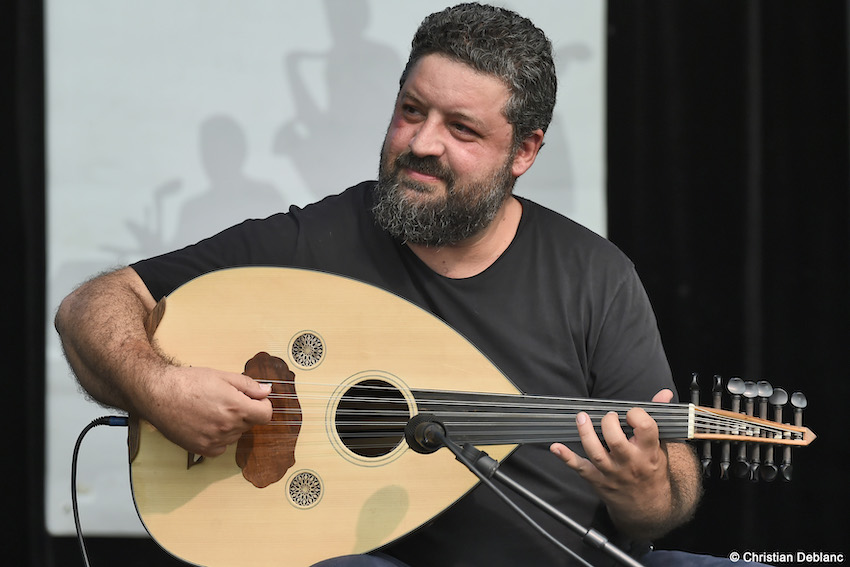 Tania‘s compositions are mostly very melodic, and the lines she and her companions sing blend Greek and Eastern influences with an accomplished art of interweaving timbres of great purity. Alternating softness and power, these three musicians create an enchanting, intimate and unique atmosphere on the bangs of jazz and world music. It’s impossible to resist such beauty : standing ovation, of course!
Tania‘s compositions are mostly very melodic, and the lines she and her companions sing blend Greek and Eastern influences with an accomplished art of interweaving timbres of great purity. Alternating softness and power, these three musicians create an enchanting, intimate and unique atmosphere on the bangs of jazz and world music. It’s impossible to resist such beauty : standing ovation, of course!
The emotional highlight of the evening was, of course, the tribute to Belgian singer Jodie Devos, who passed away too soon last spring.
The concert she had planned on the repertoire of one of her idols, Judy Garland, in the company of The Amazing Keystone Big Band did indeed take place, with her friend and replacement Neïma Naouri, and it was to a packed house under the big tent that the Belgian singer and the French orchestra brought back to life the songs made famous by Judy Garland. Sumptuous, inventive arrangements, first-rate, inspired and festal soloists, a remarkable soprano voice in both deep bass and spunky treble – everything was there except, of course, the presence of the dedicatee who, if you do believe it, must have looked on all this with benevolence from her little corner of paradise.
 A fine evening in any case, from the largest orchestra and one of the festival’s rare singers.
A fine evening in any case, from the largest orchestra and one of the festival’s rare singers.
The Munsch trio had a tough job: they took over from the Jodie Devos tribute concert in a smaller tent next door.
But this trombone, accordion and percussion group has such an original sound that it had no trouble capturing the audience’s attention.
Adrien Lambinet has a warm, ductile trombone sound, and makes moderate use of electronic effects to give it a unique dimension.
Julien De Borman, on accordion, offers rich harmonic support, and his solo interventions are admirably musical.
As for Dudu Prudente‘s percussion part, it is impressively rich and varied, and always relevant. The existence of such a binational trio is proof enough that Belgium is a veritable land of welcome and intercultural mixing.
A mix which, in a country often divided between the Flemish and Walloon communities tempted by separatism, is a pleasure to see and hear and produces, in the artistic and particularly musical fields, real successes which deserve to be better known abroad and particularly in their big neighbor, France.
Arguably the loudest band of the day, and probably of the entire festival, Sarab took over the big tent stage at the end of the evening.
Noisy yet melodic, if you subscribe to their vision of essentially binary and electric music. But it’s a music of great richness, combining rock and oriental tendencies (the singer is Franco-Syrian and often sings in Arabic), two acoustic instruments (trombone and piano), electric instruments (guitar, bass and keyboards) and a vocalist with a powerful timbre. In short, a hard-hitting musical melting pot that kept awake the night-owls that the cool Belgian evening hadn’t driven home.
The rare quiet moments of the concert – including two magnificent absolute solos on trombone and guitar – allowed us to appreciate Climène Zarkan‘s sense of nuance, accompanied by instrumentalists with calmed noisy impulses.
All in all, a fine finale from a group that had no equal in Jean-Pierre Bissot‘s eclectic program.
Mathilde Renault, who opened the third day of Gaume Jazz, has a poetic universe in which her captivating voice and inhabited piano come into their own.
The last time I saw this Belgian artist, a few years ago, she played in duo with Swedish saxophonist Jonas Knutsson. This time it’s the inspired trumpet and flugelhorn of Antoine Dawans who take up the mantle, creating a romantic, intimate atmosphere in which the lyricism of the two partners is given free rein, without ever lapsing into unbridled sentimentality.
No, Mathilde Renault‘s music is both sensitive and thoughtful, and whether we perceive it with an emotional approach sensitive to its melodic purity or with a more marked taste for harmonic structures and thematic construction, not to mention the solos, it has what it takes to satisfy a demanding audience.
After this beautiful duo concert in the festival’s only closed hall, a funky nonet called No Steam followed under the smaller tent.
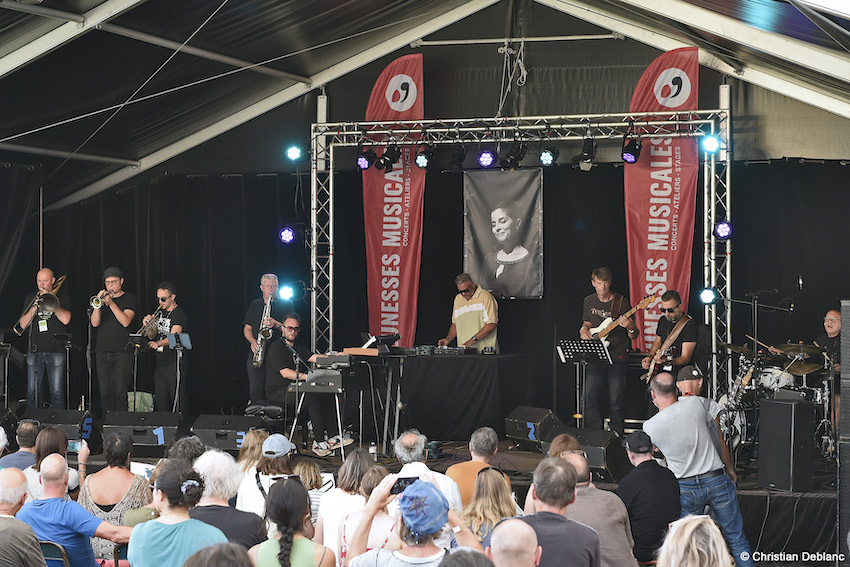 Four blowers (trumpets, tenor sax, trombone), Fender Rhodes or keyboards, turntables, guitar, electric bass – played by Nic Thys, who we’d heard the day before on double bass – and drums. No, Americans don’t have a monopoly on funk, and on the European side, Sweden’s Nils Landgren has some serious competitors in Belgium.
Four blowers (trumpets, tenor sax, trombone), Fender Rhodes or keyboards, turntables, guitar, electric bass – played by Nic Thys, who we’d heard the day before on double bass – and drums. No, Americans don’t have a monopoly on funk, and on the European side, Sweden’s Nils Landgren has some serious competitors in Belgium.
After all, No Steam is pure, unadulterated funk, with a huge, take-no-prisoners sound and punchy soloists who are eager to take on the world when it’s their turn. In short, it was a hot afternoon both under the tent and under the scorching Gaumois afternoon sun.
Later, under the big top, the re-creation of a show originally written to celebrate the fall of the Berlin Wall and deplore the conflicts in the former Yugoslavia took place: No Wall No War, featuring an accordion/clarinet/double-bass/drums quartet and a dozen dancers. A total spectacle, then, animated by a beautiful energy and where the interaction between the musicians and the performers was fascinating to follow.
Once again in the small hall, packed as usual, it’s not one female voice but three – at times displaying sumptuous vocal harmony. It’s Chrystel Wautier‘s sextet, completed by a trio of keyboards, guitar and drums. The atmosphere is relaxed, the music welcomely light, sometimes groovy and dance-inducing, sometimes more dreamy and the instrumental solos are first-rate.
Here again, we see the diversity of styles practiced by Belgian jazz, in a small country which, to my knowledge, has the highest ratio of good musicians to its population.
When you come from France, you can’t help but be amazed by this phenomenon, which at this level is not to be found in Switzerland or the Scandinavian countries where, although there are also good musicians, they are often followers of a stylistic identity linked to the aesthetics of the ECM label. Belgium, then, is a land of contrasts, and we would strongly advise French jazz fans to get in touch with musicians from the so-called Plat Pays, where syncopated music is anything but uniform.
The German-Greek group Rousilvo kicked off the final evening with their often meditative and intense music, featuring the interplay of alto sax and trumpet, double bass and a drummer who also played keyboards, while the accordionist and singer sang oriental melodies. The music was deliberately atmospheric, written as a tribute to a martyred Macedonian village, but did not shy away from more spirited collective or solo flights of fancy.
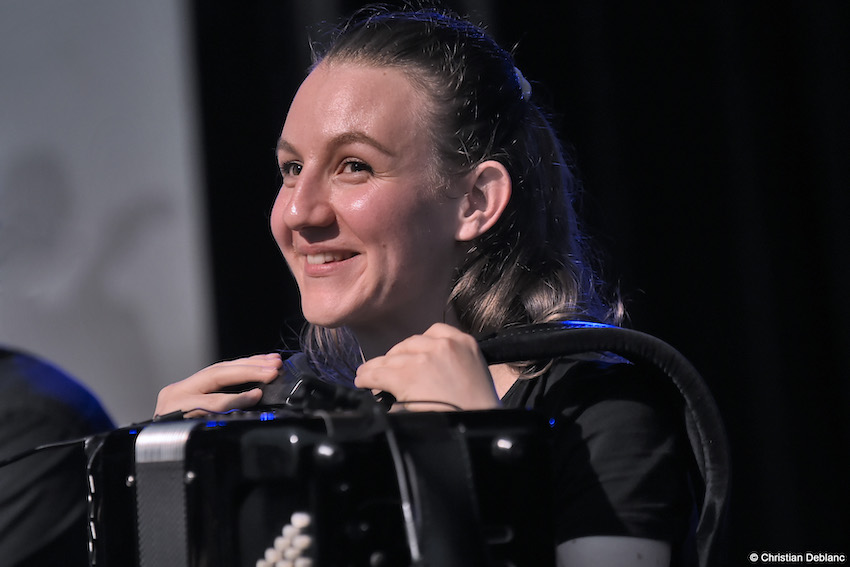 All in all, a fine concert by talented musicians who had no trouble winning over a large, delighted audience.
All in all, a fine concert by talented musicians who had no trouble winning over a large, delighted audience.
All in all, this fortieth edition of Gaume Jazz was a complete success, and for someone like me, who was there for the first time, it’s clear that I’ll be there next summer. But first, a few concluding words from Jean-Pierre Bissot, the creator and driving force behind the Gaume Jazz Festival:
“This year we’ve had around 20% more visitors. This is linked to the fact that we worked a lot on our communication strategy, via social networks among other things. It’s also due to the particularly good weather, which boosted pre-sales.
The Jeunesses Musicales in my region of Belgium, of which I was director for some forty years, also encourage young people to attend the Gaume Jazz Festival, and our festival is one of the few where you can see children running around on the lawns.
We’re not into youthism, but we do program a lot of young musicians and, in parallel with the festival, we run an instrumental practice course for young musicians. This year we had 180 trainees. In this way, we’ve made the word “jazz” more accessible to the general public, who often associate it with music that smells of mothballs or is highly intellectual.
Although the Gaume is a very rural region, we reach – within a 200 km radius – cities like Nancy, Reims, Brussels, Liège or Luxembourg, and a third of our audience comes from there. We’re not looking to expand too much: we wanted to keep the village festival atmosphere. We’re sticking to an audience of around 1,000, which suits us just fine.”
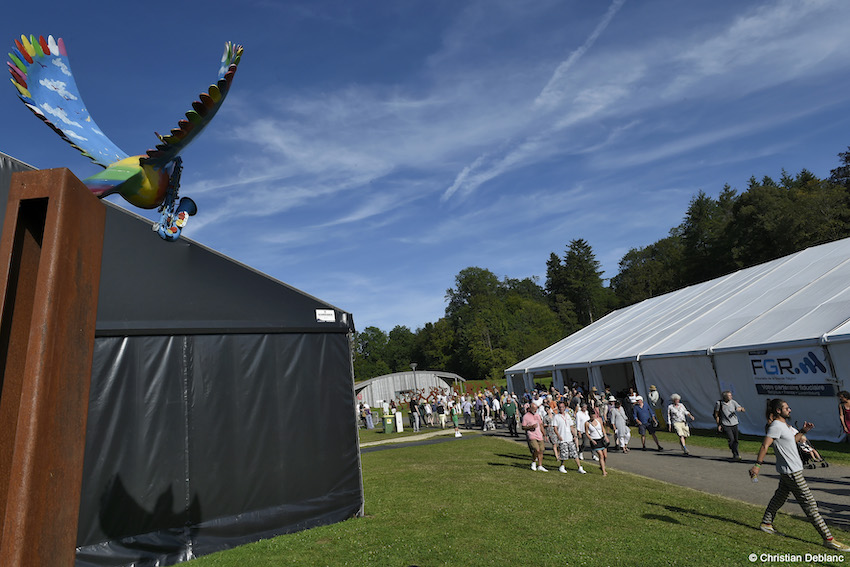
©All photos from the excellent Christian Deblanc
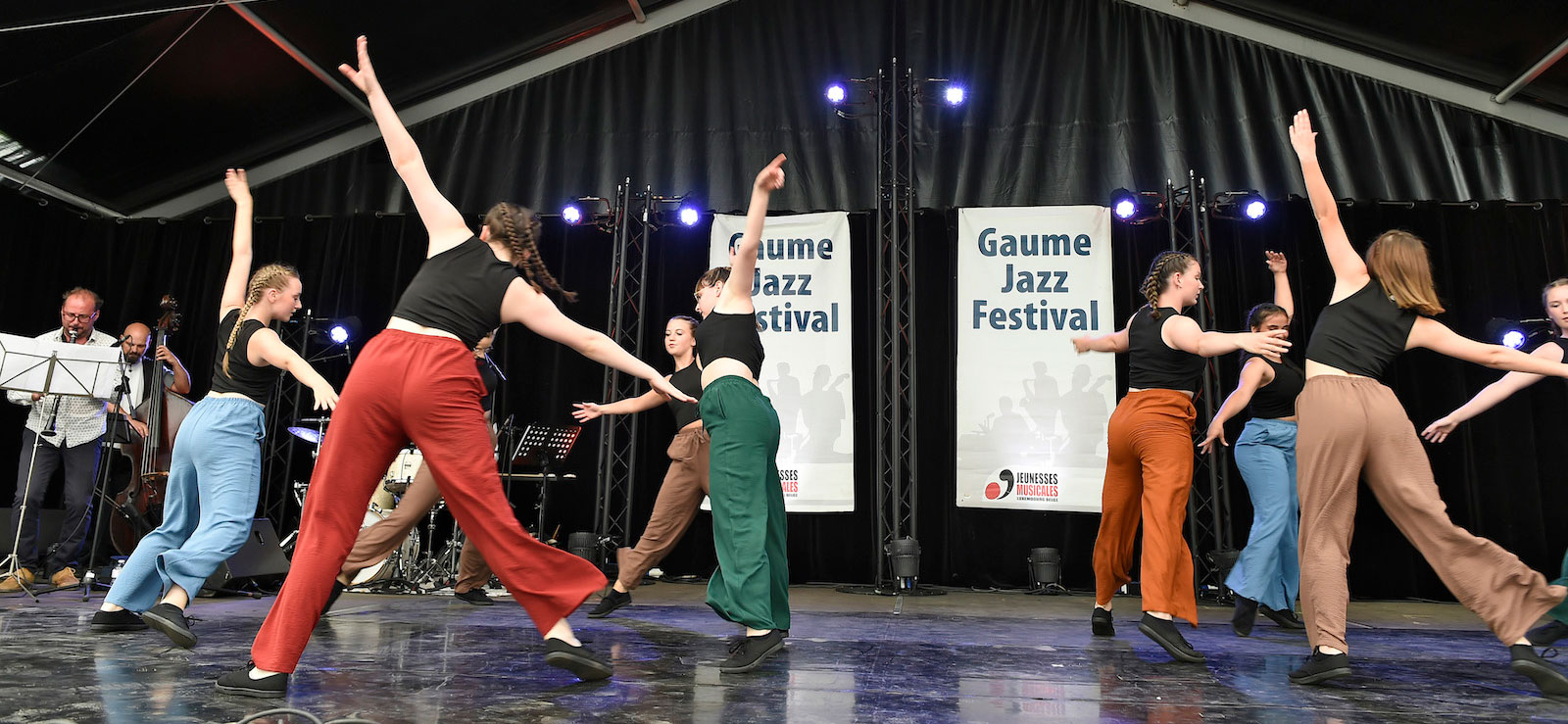



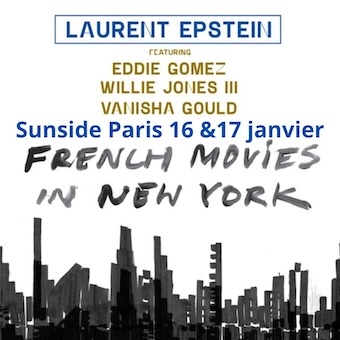
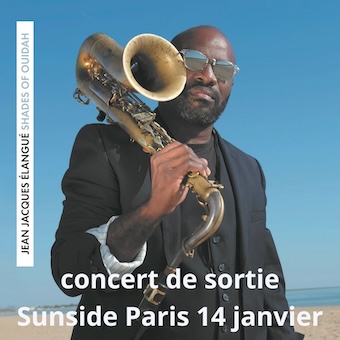
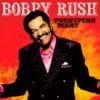

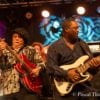
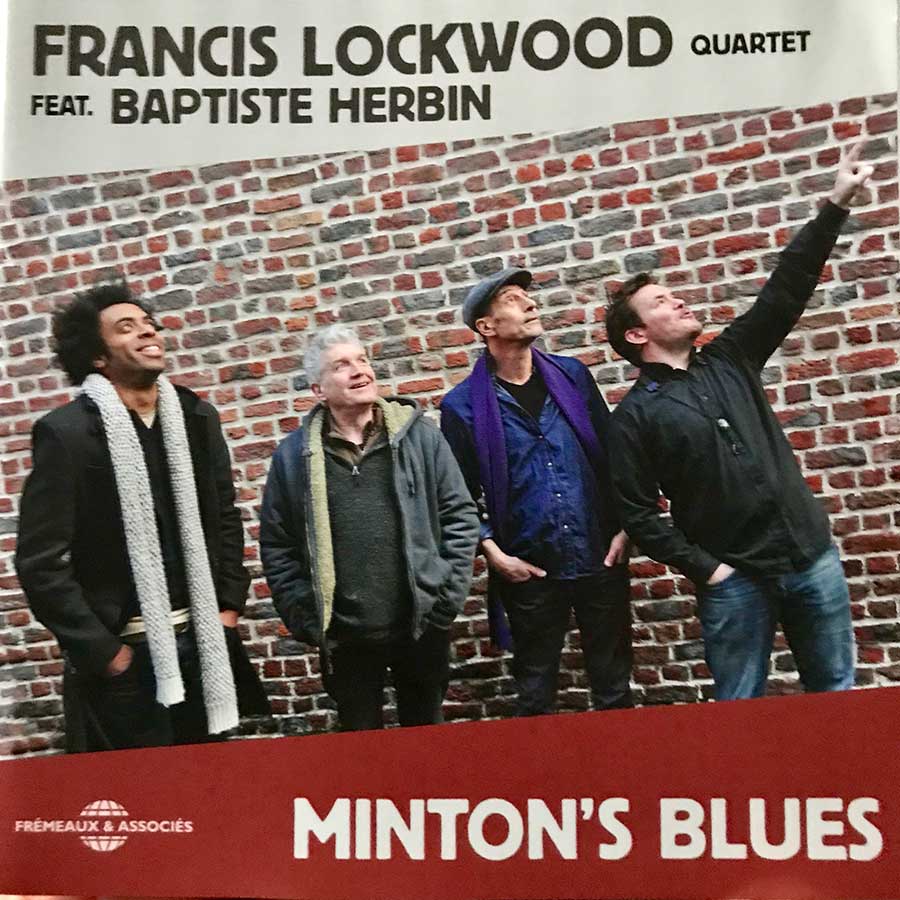

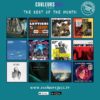

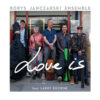




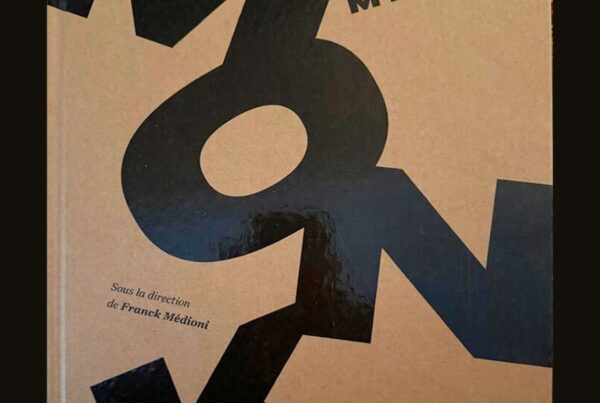


RECENT COMMENTS